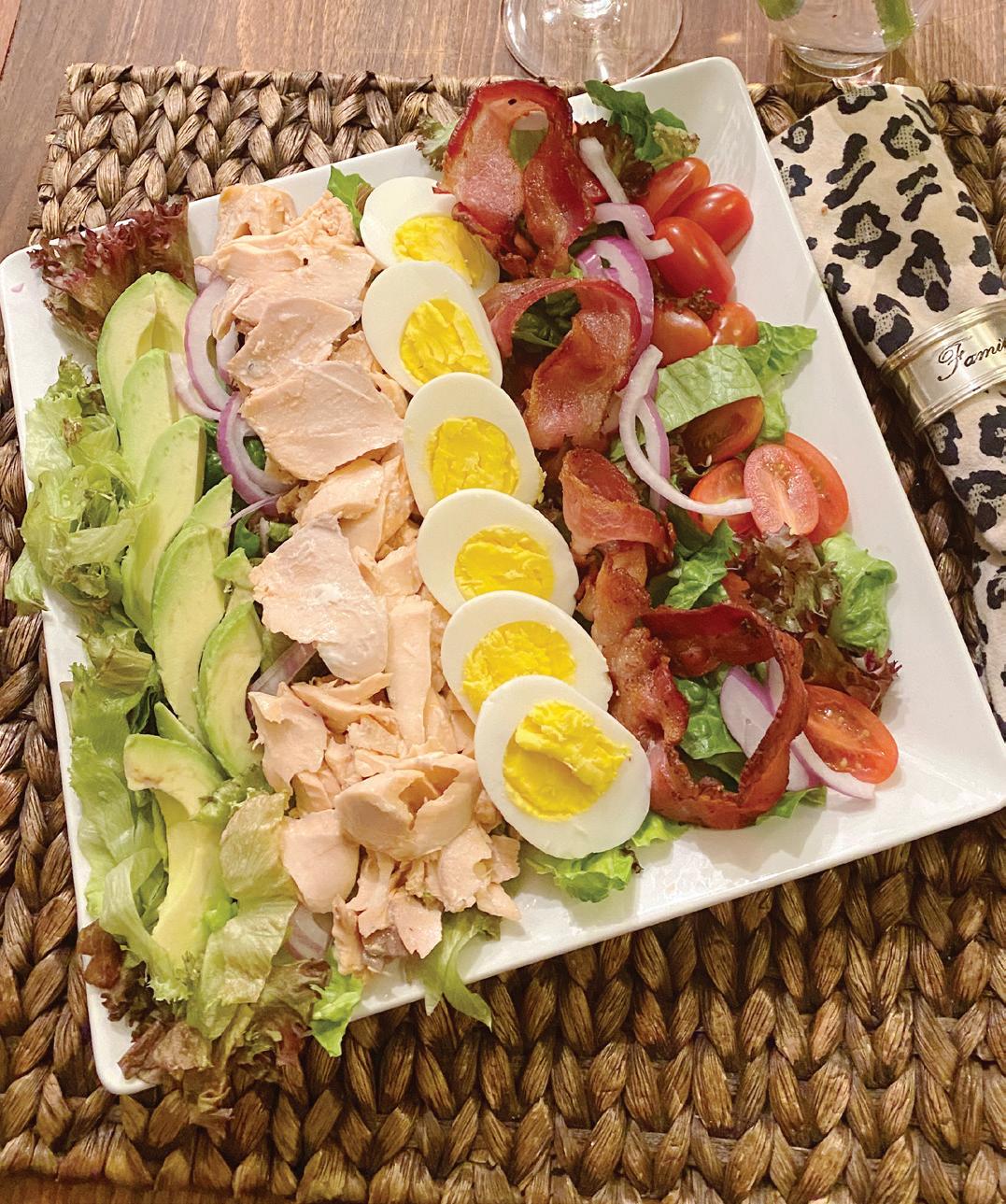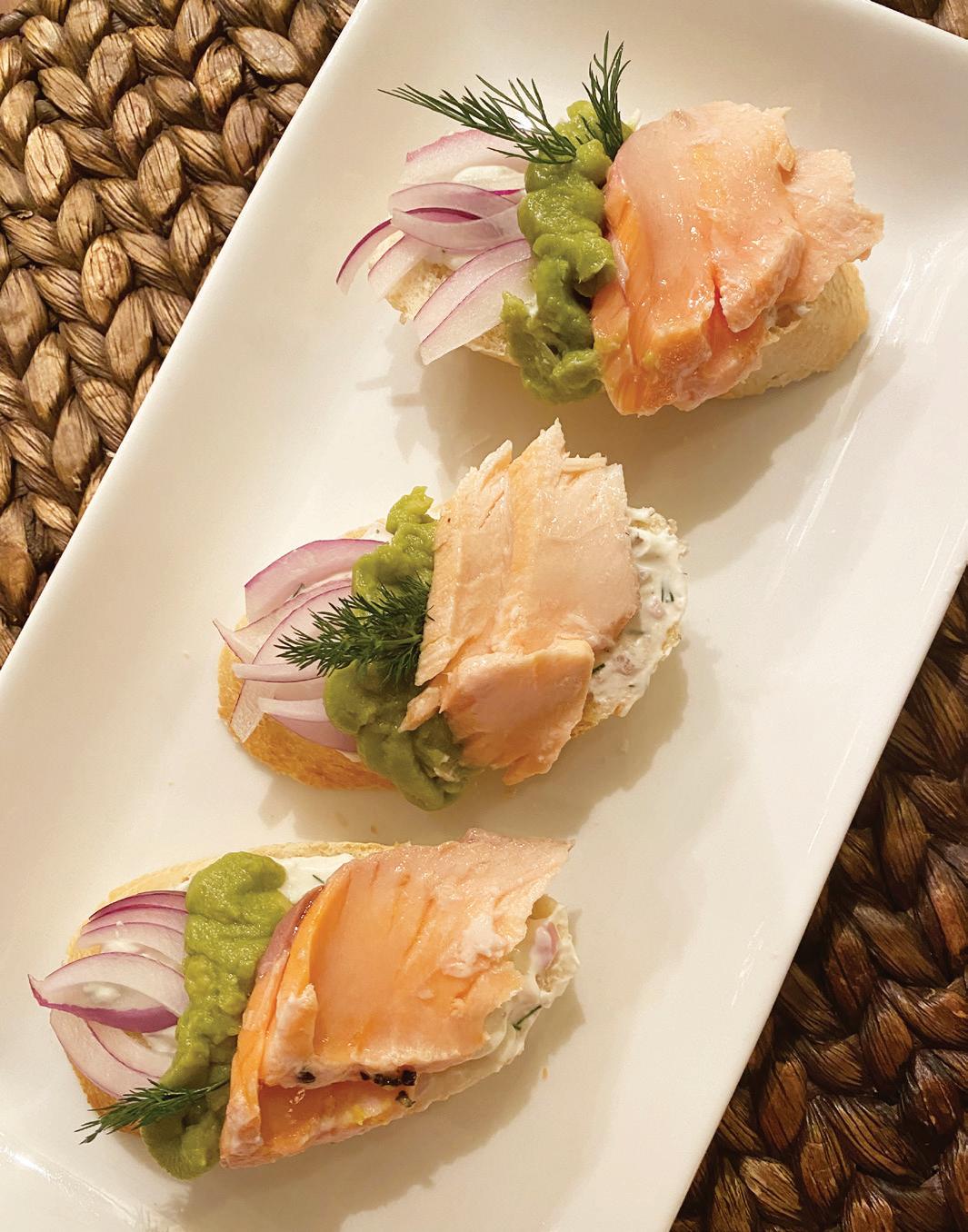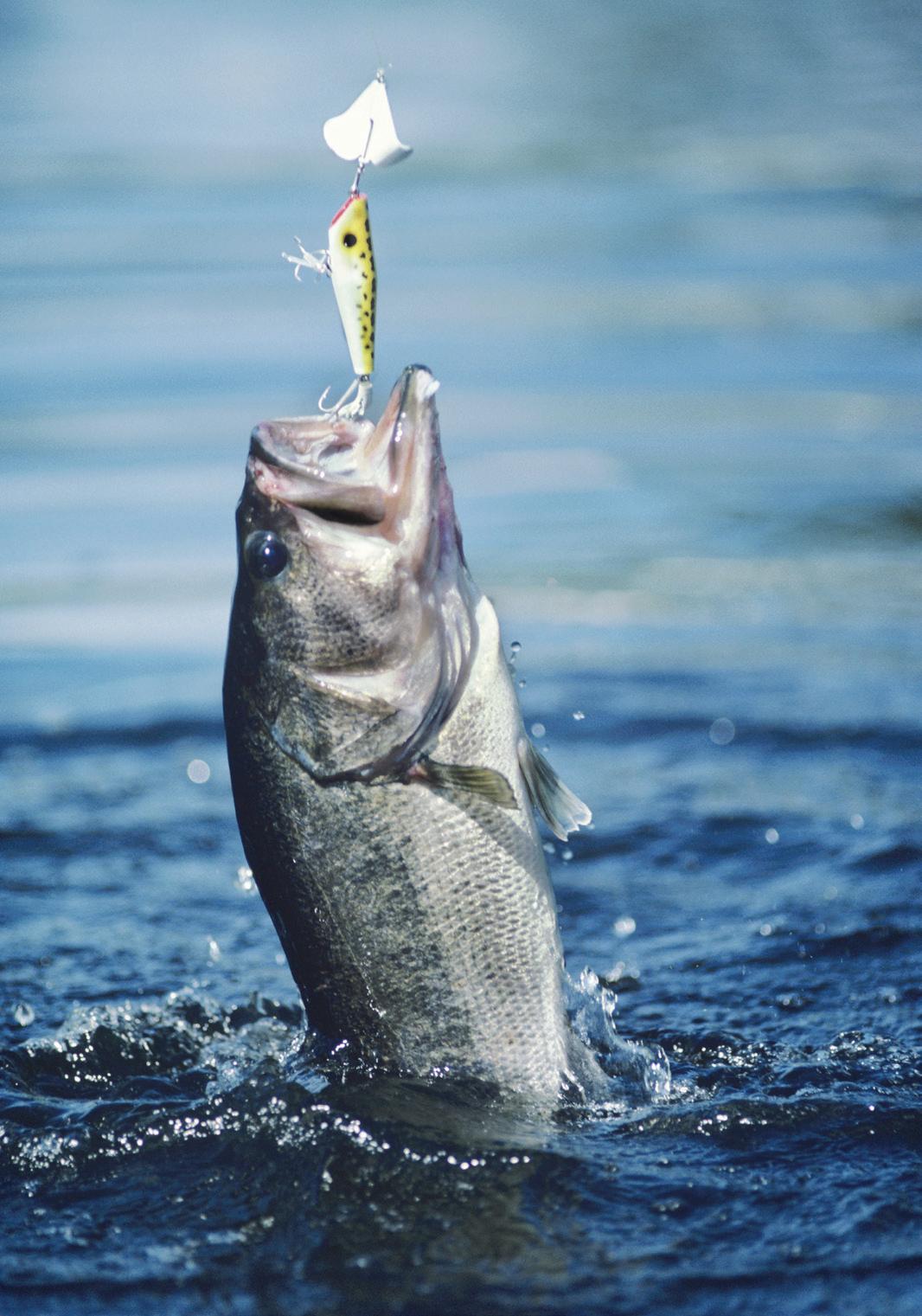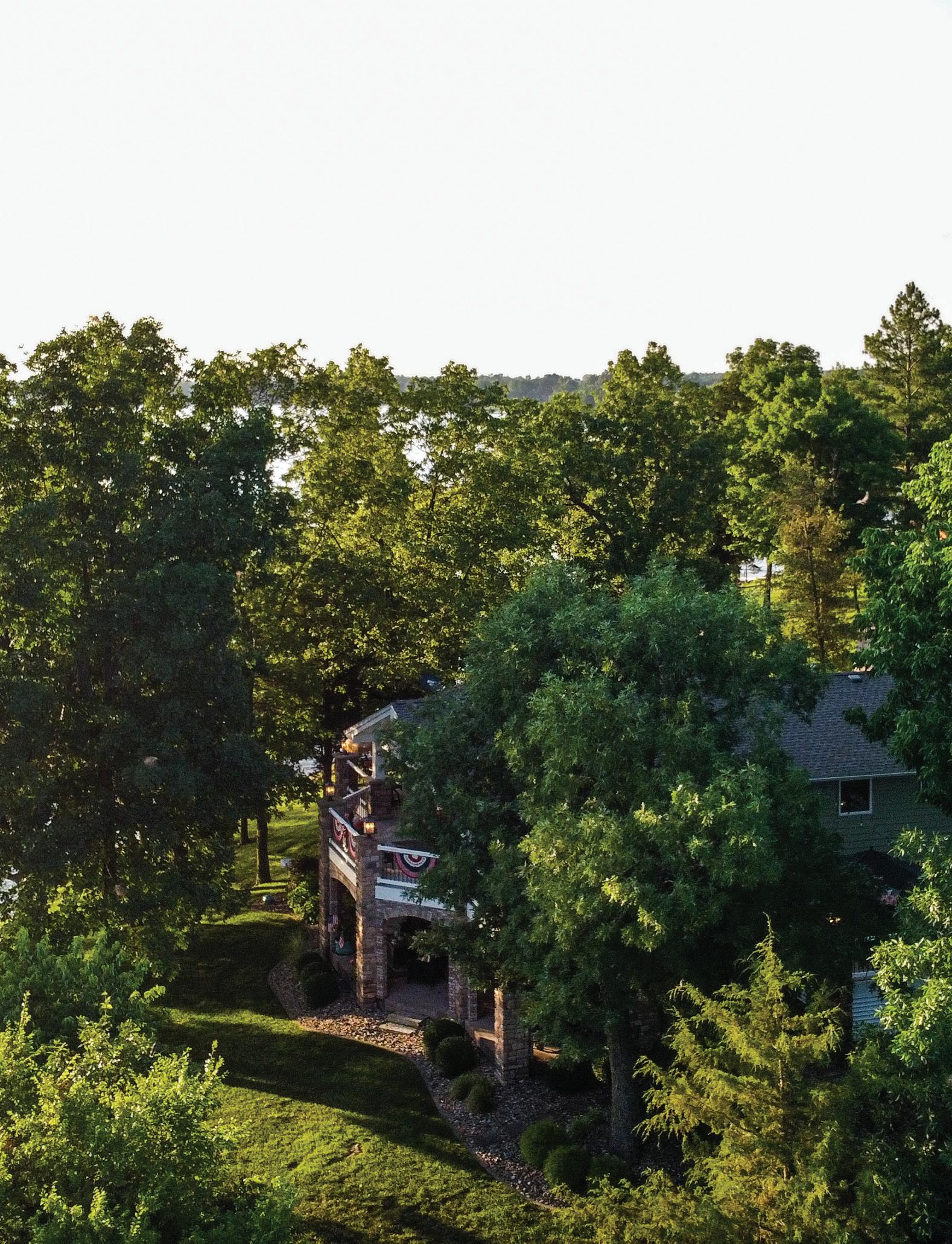
7 minute read
IN THE KITCHEN
CUSTOM WINDOW TREATMENTS | FURNITURE | LIGHTING FLOOR COVERINGS | ACCESSORIES
QualityOutddrFurniture
Advertisement
Since 1995, I’ve been bringing beautiful windows and rooms to residential and commercial clients all over Southern Illinois. I work with you to create your Dream Room with custom furniture, window treatments, outdoor furniture, area rugs, hand selected accessories, lighting and artwork. So call me and we’ll design a window, room, outdoor space, or whole househouse ofof your dreams!
ANGELA ROWE, DDCD
angelarowe.decoratingden.com 618-253-4711 • 1-888-467-4711 (toll free)
/decoratingdenangelarowe /pro/rowedecoratingden
Goodbye Winter, Hello Spring!
BY VICTORIA SPREHE
II’m not sure why I associate salmon with spring, but it was the first thing that came to mind when choosing the culinary topic for this issue. Salmon is a delicious and healthy fish that can be prepared a variety of ways. My favorite way to prepare salmon is to poach the whole side. Preparing a whole side of salmon gives you enough fish for dinner and maybe some leftover for other dishes, too. Of course, this method can be used to poach already-cut salmon filets as well. When buying salmon I recommend buying wild caught over farm raised. Even if the wild caught is frozen I believe the quality to be much better than farm-raised salmon, in most cases. Farm raised salmon is fed food that has been injected with a synthetic astaxanthin and carotenoid pigment. Let’s skip the synthetic and go for the healthier, wild caught version which provides all kinds of health benefits. Here are some of the nutritional benefits of eating salmon…omega-3 fatty acids, protein, potassium, B vitamins, selenium, the natural antioxidant form of astaxanthin, helps fight inflammation, reduces the risk of heart disease and protects your brain health. Given all that I suppose we should eat salmon every day. Poaching is one of the healthiest, most flavorful, and really one of the easiest ways to prepare salmon. This instruction is for my preferred method, “shallow poaching”. This method is basically a gently simmered salmon in liquid called “court bouillon” which contains seasonings, herbs, and usually an acid. The result is a flavorful, melt-in-your mouth salmon that is perfect by itself, but it also gives you a product that you can use in a variety of ways.
INGREDIENTS
• Fish poacher or other cooking vessel (foil pan, roasting pan, i.e.) long enough to hold a side of salmon and deep enough for the salmon and “court bouillon” using just enough liquid to partially cover the salmon. • Thermometer • Cold water • White wine • Lemon, sliced • Onion or Leek (white party only), sliced • 2 carrots, cut in 1 inch slice • 2 large stalks of celery, roughly chopped (I like to use the inside stems with the leaves attached) • 4 sprigs of thyme • 4 sprigs of fresh parsley • 1 Bay leaf • Kosher salt • Whole peppercorns • 1 whole side of salmon (Check for small bones and rinse the skin side to remove any loose scales if you intend to cook it with the skin on. I prefer to remove the skin when poaching. It is really more of a personal preference. For me, the skin develops an unpleasant texture after sitting in the poaching liquid that I don’t like. With or without the skin it will not affect the outcome of your finished product.)
TO START...
1. Sprinkle the salmon with kosher salt and set aside. 2. In a large pan or bowl make a liquid mixture of 4 cups of cold water, 1-2 cups of good quality white wine. (You know what they say…if you wouldn’t drink it, you shouldn’t cook with it either.) These amounts should provide you plenty of poaching liquid, but it will depend on the size of the cooking vessel you are using. 3. Spread ½ of the total ingredients #5 thru #13 into the bottom of the fish poacher or if you are using a different poaching vessel simply add all of the ingredients to the bottom of the vessel. The ingredients will act as your poaching shelf. 4. Place the prepared salmon on the poacher shelf (I usually lightly spray the shelf just to be sure the salmon slides right off when it’s done) and drop the shelf with the salmon into the poacher on top of the herbs and vegetables. If you are not using a poacher, simply place the salmon on top of the ingredients. I suggest that if you are using the ingredients as your poaching ledge it is sometimes better to leave the skin on just to be sure the salmon doesn’t start to break apart. You can also wrap the salmon in cheesecloth to be sure that it remains intact. 5. Fill the poacher or cooking vessel with as much of the liquid mixture of wine and water as it takes to come about ½ way up the side of the salmon. 6. Sprinkle the remainder of the ingredients #5 thru #13 on top of the salmon if using a fish poacher. 7. Cover with a lid or foil and bring to a simmer over medium heat and keep at a simmer throughout the whole cooking process. It is ideal to keep the poaching liquid at a temp somewhere between 160 degrees and 180 degrees F. I think the slower the fish poaches, the better. 8. The cooking process will take a very short time (no more than 10 minutes once it starts to simmer, depending on the size of your salmon). This is why I think a thermometer is important and takes all the guessing out of it. One minute too long can result in an overcooked and very dry salmon. Temp your salmon at its thickest section. When it reads 115 degrees take the salmon out and let it rest for 5-10 minutes. The carryover cooking will finish the salmon to temp (about 145 degrees) and maintain its moistness. If you don’t have a thermometer you can test the doneness by pressing on the top of the fillet with a fork…if it flakes, its done. 9. You can plate the salmon with lemon slices and sprigs of dill for a beautiful presentation. Serve with a yogurt dill sauce (recipe on page 25).
Yogurt Dill Sauce
INGREDIENTS
• 1 cup of full-fat, unflavored yogurt • 1 Tablespoon minced shallot • 1 Tablespoon minced fresh dill • 2 Tablespoons fresh lemon juice • A pinch of ground coriander • Kosher salt and coarse ground pepper, to taste
Mix all ingredients and refrigerate until ready to serve.
If there is any leftover salmon, you can store it in the refrigerator for up to 3 days. I love having leftover salmon because for the next three days I have a deliciously prepared fish that can be used in so many ways. Here are just a few ideas…
1. Salmon Eggs Benedict (Traditionally made with smoked salmon, but truthfully just as delicious when made with leftover poached salmon.)
2. Salmon Cobb Salad 3. Salmon Patties (Did your Mom make salmon patties for you when you were a kid? You know the ones made out of that canned salmon that had all the bones and even the fish vertebrae in it? My Mom did and she definitely used saltines as the binder and fried them in Crisco. They were always served with mashed potatoes and peas, and of course, always eaten with ketchup. Definitely not heart healthy. If you want to use some of your leftover salmon to make a delicious version of salmon patties you should try this recipe at www. cookingclassy.com/salmon-patties-salmon-cakes 4. Leftover salmon can be used to make appetizers limited only by your imagination. • Add flaked salmon to the top of a deviled egg and embellish with a little sprig of dill. • Use the dill sauce as a base on a crostini and add salmon, avocado and red onion. • Serve salmon on a cucumber round with crème fraiche and lemon zest. • Roll it up in a tortilla with a dilled cream cheese and slice into pinwheels. • Make salmon patties into small croquettes and serve with yogurt dill sauce. 5. Or my husband’s favorite….Portion the leftover salmon into baggies and take it to work for breakfast AND lunch. –Bon Appétit!







